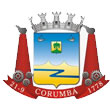Autores
- AGUINALDO SILVAUFMS/CPANEmail: aguinaldo.silva@ufms.br
- MARIO LUIS ASSINEUNESP/RCEmail: mario.assine@unesp.br
- MICHAEL M MCGLUEUNIVERSITY OF KENTUCKY/EUAEmail: mmmc234@g.uky.edu
- HUDSON DE AZEVEDO MACEDOUFMS/CPANEmail: hudson.macedo@ufms.br
- BEATRIZ LIMA DE PAULA PAULA SILVAUFMS/CPANEmail: beatriz.paula@ufms.br
Resumo
Flowing from north to south, the Paraguay River (Brazil) is the trunk river for
overlapping depositional systems tracts composed of many fluvial megafans that
characterize the Brazilian Pantanal. Since the Pleistocene, the Paraguay River
has built a fluvial megafan at the northwestern sector of the Pantanal. Prior to
entering the Pantanal floodplain, the river runs along a 5-km-wide Holocene-aged
meander belt dated to 1-3 ka BP. The meanders in the north transition to a
rectilinear channel habit in the south. The meander belt is in an incised valley
within Pleistocene deposits aged 10-160 ka BP. Age dates from abandoned meander
lobes of the Paraguay megafan were dated to 10-70 ka BP. The abandoned lobes are
presently in a state of pedogenesis and fluvial incision by younger tributary
channels that have masked the paleo-drainage networks of the distributary
channels. This leads to floods and permanently flooded areas where the waters
run off along a multichannel complex that forms the Canzi River. The present
depositional lobe of the Paraguay River megafan has been built not only from the
formation and abandonment of channels and marginal levees, but also from the
large quantity of sediment deposited during flood events. These geomorphic
features produce a complex megafan with marginal levees, channel aggradation,
crevassing and splays, channel switching and flood discharge that produce flood
events beds and muddy laminae in the sedimentary record. Discharge measurements
in the Paraguay River revealed values of 693.74 m3/s upstream and 389.14 m3/s
downstream of the avulsion, with the difference (220.30 m3/s) draining into the
Canzi channel. As floodplains are topographically lower than channels and often
form wetlands, this area will likely experience a new Paraguay River avulsion,
which may ultimately occupy the Canzi River.
Palavras chaves
fluvial megafan; avulsion; Paraguay River




















